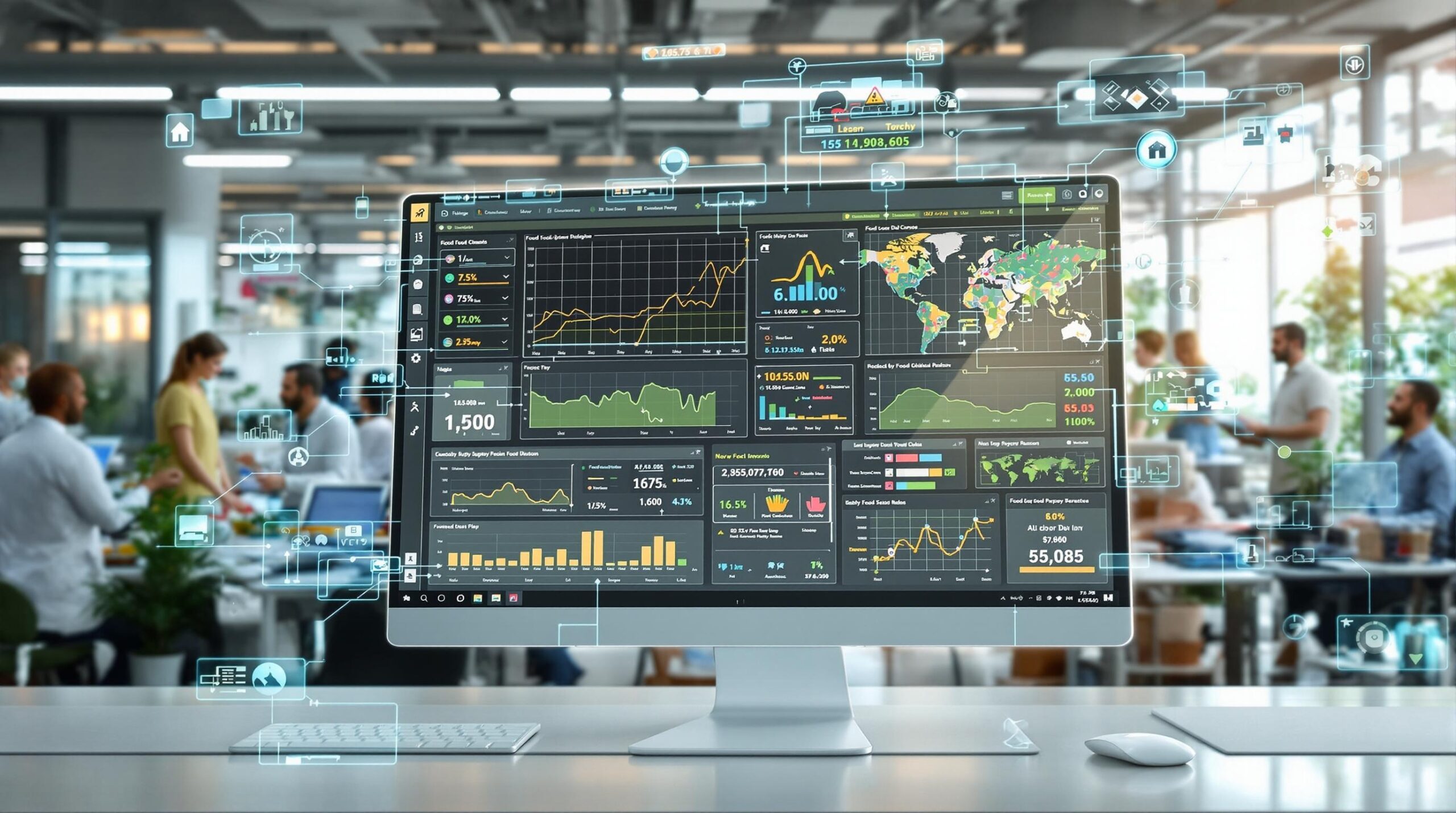Food supply chains span continents and involve countless stakeholders. Predicting shifts in these complex networks is crucial for global stability, sustainability, and security. A new artificial intelligence (AI) tool now promises to revolutionize how experts understand and manage food flows worldwide.
The Growing Need for Supply Chain Forecasting
Climate change, political instability, and pandemics have exposed vulnerabilities in existing food supply frameworks. Even minor disruptions can rapidly escalate into global shortages or price spikes. Traditional forecasting methods often lack the speed and nuance required for today’s multifaceted challenges. As the food system grows more interconnected, stakeholders need better insight to respond proactively. This necessity has spurred the development of AI-powered tools that can outpace conventional models.
How the AI Tool Functions
This cutting-edge AI tool harnesses advanced algorithms to analyze enormous, real-time datasets. It draws information from logistics data, satellite imagery, trade reports, and weather forecasts. The tool then synthesizes this data to detect patterns invisible to human analysts or traditional computer models. By learning from historical disruptions, the AI improves its predictions over time. Its insights help stakeholders get one step ahead of looming supply chain stresses.
Core Technologies Behind the Tool
The tool’s core relies on machine learning, natural language processing, and deep learning networks. Machine learning identifies subtle correlations between events, such as regional droughts and shipping delays. Natural language processing decodes supply chain news in dozens of languages to spot new disruptions. Deep learning layers integrate these findings, producing tailored recommendations for different users. This combination ensures highly nuanced, timely forecasts that adapt to a changing world.
Applications in the Real World
Governments, agricultural companies, and humanitarian organizations have begun deploying this AI tool in pilot projects. Several countries use it to anticipate shortages of staples like wheat or rice before they affect citizens. Food distributors rely on alerts to reroute shipments in response to port closures or export bans. Humanitarian agencies prepare aid in advance, positioned to respond to crises more effectively. Early users report increased efficiency, less waste, and faster response times to emerging threats.
Case Study: Weather Disruptions in Southeast Asia
During the latest monsoon season, the AI tool detected unusual rainfall patterns threatening regional rice harvests. It alerted major food exporters weeks in advance, prompting them to secure alternative shipping routes. Governments and aid organizations could then bolster grain reserves and pre-position supplies. As a result, food shortages and price volatility across Southeast Asia were largely averted.
Mitigating Political and Economic Disruptions
When political tensions rise near key trade corridors, the AI system tracks changes in export behavior and border policies. It issues warnings ahead of potential embargoes or blockades, giving decision-makers time to act. Retailers adjust sourcing strategies and logistics providers diversify their routes accordingly. This proactive stance helps maintain supply stability despite unpredictable global events.
Global Benefits and Lasting Impact
The new AI tool’s benefits extend across economic, environmental, and social domains. Accurate forecasts enable companies to minimize waste by adjusting inventory more effectively. Optimized transport means lower fuel consumption and reduced emissions, contributing to sustainability goals. Early intervention reduces the threat of famine or food insecurity for at-risk populations. Policymakers and industry leaders gain unprecedented visibility into supply vulnerabilities, empowering smarter, faster decisions for the public good.
Enhancing Supply Chain Transparency
The AI platform provides a detailed map of food flows and bottlenecks. This transparency helps identify and address inefficiencies, ensuring a smoother path from farms to tables worldwide. Consumers and advocacy groups can also access insights, holding companies accountable for their sourcing and distribution choices. Ultimately, increased transparency builds trust in the global food system.
Challenges Faced by AI-Driven Supply Chain Forecasting
Despite its promise, the AI tool faces several substantial challenges. Data quality and access remain significant barriers, especially in regions with limited infrastructure. Some stakeholders worry about the digital divide, fearing smaller producers may be left behind. Additionally, overreliance on AI predictions could encourage complacency among decision-makers. Tools like these perform best when paired with human judgment and local knowledge. Developers emphasize the need for transparent algorithms and inclusive implementation.
Data Privacy and Security Concerns
Integrating sensitive trade, production, and transport information raises questions about data privacy. Protecting this information from misuse is vital to maintaining stakeholder trust. Developers are investing heavily in encryption and decentralized data sharing to ensure safety. Regulatory frameworks will likely need to evolve as adoption expands globally. Ongoing dialogue between technology providers, governments, and civil society remains crucial.
The Future of Food Supply Chain AI
Experts widely expect AI-driven forecasting to become a staple in food supply chain management over the next decade. As computing power grows, future tools will analyze more diverse data sources, including social media sentiment and biometric crop monitoring. Teams are developing intuitive interfaces to make forecasts accessible to smallholders and local NGOs. With proper safeguards, expanded capabilities can help ensure equitable benefit distribution.
Collaborative Innovation for Resilient Food Systems
Bringing AI-based forecasting’s full potential to bear demands collaboration among tech firms, governments, academia, and industry. Open-source platforms could help democratize access to forecasting tools, ensuring no stakeholder is left out. Joint training and infrastructure investments can accelerate AI adoption, especially in lower-income countries. As stakeholders coordinate, the positive effects on food security could become broad and lasting.
Conclusion: Paving the Way to Food System Resilience
The launch of this innovative AI tool marks a significant leap for global food supply chain forecasting. Smart predictions empower stakeholders to confront uncertainty with greater confidence. While hurdles remain, the integration of advanced AI promises more resilient, efficient, and fairer food systems worldwide. As technology and international cooperation advance, sustainable solutions for future food challenges are within reach.


